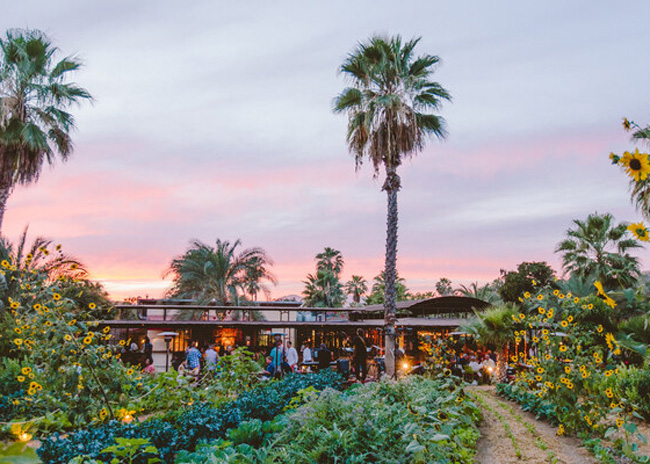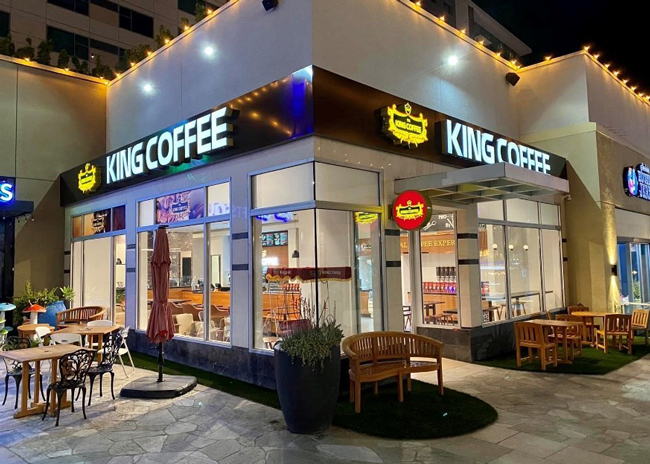Multi-unit Houlihan's franchisee owner Dan Stevens, owner of Stevens Management and Consulting, has mixed his passions for the hotel and restaurant industries by bringing Houlihan's to a hotel setting.
 Dan Stevens rd+d: What made combining these two operations appealing?
Dan Stevens rd+d: What made combining these two operations appealing?
DS: There were actually three factors that helped drive the decision: One, hotel restaurants typically don't appeal to most travelers, as they are often too ordinary, so we thought a proven concept would not only help reach a greater portion of hotel guests but also drive business in from outside the hotels. There certainly are exceptions but that is "the norm." The potential for business from more than just the hotel guests was one of the major driving issues that had us search for the right option to start with.
Two, Houlihan's offered a more refined look than most casual dining concepts. The look fit well with an upper scale hotel concept such as Hilton or Crowne Plaza. They were open to working with us on the brand standards and required Houlihan's design elements to incorporate them into the hotel setting to still represent those items, but without overwhelming the key hotel elements, which the hotel brands insist upon.
Three, the menu was diversified and interesting enough for what tends to be a more corporate traveler in the hotels we looked at. This extended to both the food and bar offerings.

rd+d: How do you integrate two different concepts without compromising the design and identity of each?
DS: That was actually very challenging and required a lot of communication with Houlihan's to ensure their identity was there without overtaking the hotel's look and feel. You have to go into it knowing that the hotel franchisor has a great deal of influence on your final product as that is the more influential of the two brands through sheer size and investment at stake. With Houlihan's, the interior was simple — the hotel brands had no issues at all.
The exterior or street appeal was the most difficult area and that varied in projects by the look of the hotel and where the restaurant was located within the building. Some hotels will lend themselves to a fairly prominent street view based on their design while other more traditional, straight angled, rectangular mid- to high-rise buildings present more challenges.
rd+d: What design synergies were there?
DS: The interior flowed very well in the first hotel (a Hilton) as it was a more traditional, corporate hotel and the Houlihan's interior at the time was a lot of wood and a more classic look. The second hotel (a Crowne Plaza) had a slightly more modern look without being a truly modern look. The finishes and overall look worked well in that Houlihan's was done with less wood [that it would traditionally be] and a slightly more modern interior to flow from the hotel lobby well. Today's Houlihan's interior has even more modern elements without losing too much of the classic design features, which is conducive to many hotel brands.
rd+d: What are the challenges of meeting chain requirements in a hotel setting, a space that has its own design and functional requirements?
DS: There are many challenges when trying to combine what every stakeholder needs in a marriage like this. It's finding that right combination of maintaining key elements of the restaurant but [being] able to work with the box that you have to work with. Working with a restaurant concept or chain that is willing to adapt certain layouts to fit your needs is critical. Every restaurant chain has a basic layout and flow they want to attain in each location that maintains their identity. You have to be sure to a great degree that the space you are working with in the hotel can be adapted to meet that. A few key issues that have to be considered are: total square footage, the size of the kitchen space when considering the kitchen equipment for a restaurant and banquets, the ability to have hotel lobby access, as well as an outside entrance for non-hotel guests, the flow of the dining room into the kitchen (which may, in some cases, double as a banquet or room service kitchen requiring separate ingress and egress) and the type of seating (booth or table) to allow enough flexibility to adapt seating to various size groups that may opt for the restaurant versus a banquet function during meetings in the hotel.

rd+d: Putting the restaurant in the hotel likely meant multiple points of entry. How did this impact design and flow?
DS: This varied by location, depending on the proximity of the lobby access to the exterior access inside the restaurant footprint. This did require some concessions on the dining room layout and as a result may have wasted a few square feet in the dining room. However, if the access points aren't too far apart, it's better to try to merge them into a central greeting point to maintain a good flow throughout the rest of the dining room. If that isn't feasible, it does have an impact on the flow. A key point to consider here is the operational aspect: Does the design create operational inefficiencies or will there be enough volume to make this design cost effective?
rd+d: What do you look for in non-traditional venues for restaurants?
DS: Is the customer traffic a good fit for the restaurant? Make sure the people that are going to be around the location fit your targeted demographics.
Does the space work for the concept? You can make a restaurant fit in many different spaces, but that doesn't mean the restaurant still works well in that space. The square footage and general layout has to make sense.
What is the strength of the surrounding businesses that generate the traffic to the area and is it sustainable for an extended period of time?
Can you create and project your restaurant identity sufficiently to maintain the value of your brand and to market to the surrounding traffic?
Just to summarize, I think the concept of the Houlihan's, with so much of the kitchen being from-scratch cooking, and the traveler who appreciates something more than the same old restaurant chain, works well. The look and the feel of a Houlihan's fits well with many of the mid- to upper-scale brands in the design features.



